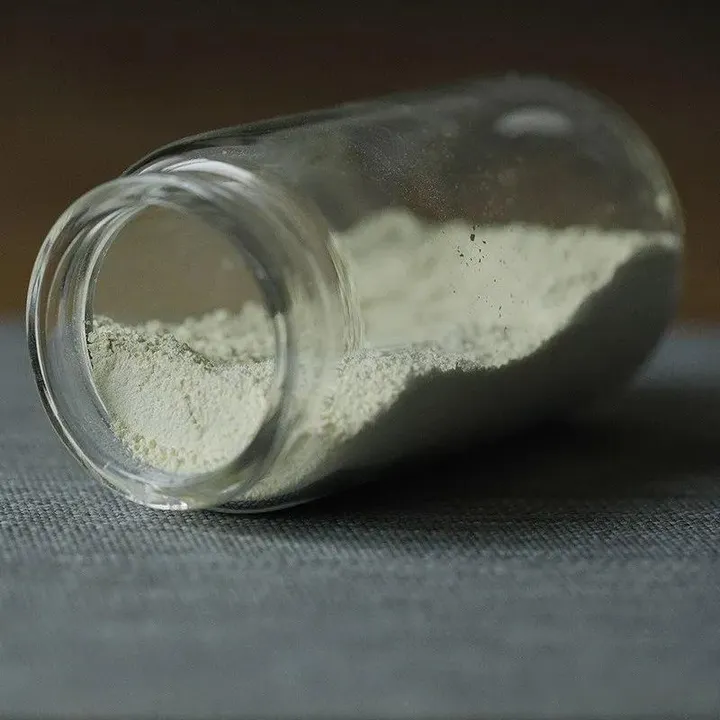 YuYi
YuYi
 Oct 19,2023
Oct 19,2023

Nano cerium oxide has a small particle size, uniform particle size distribution, and high purity. Insoluble in water and alkali, slightly soluble in acid. It can be used as polishing materials, catalysts, catalyst carriers (auxiliaries), automobile exhaust absorbers, ultraviolet absorbers, fuel cell electrolytes, electronic ceramics, etc. Nanoscale cerium oxide can directly affect the performance of materials. For example, adding ultrafine nanometer cerium oxide to ceramics can reduce the sintering temperature of ceramics, inhibit lattice growth, and improve the density of ceramics. A large specific surface area can better improve the catalytic activity of the catalyst. Its price-changing characteristics make it have good photoelectric properties and can be doped into other semiconductor materials for modification, improving the efficiency of light quantum migration and improving the photoexcitation of the material.
According to research, ultraviolet light between 280nm and 320nm can cause skin tanning and sunburn and even cause skin cancer in severe cases. Adding nanoscale cerium oxide to cosmetics can reduce the damage of ultraviolet rays to the human body. Nanocerium oxide has a strong absorption effect on ultraviolet rays and can be used as an ultraviolet absorber in sunscreen cosmetics, automotive glass, sunscreen fibers, coatings, plastics, and other products. Cerium oxide is used in sunscreen cosmetics. It has no characteristic absorption of visible light, good permeability, and good UV protection effect; and amorphous silicon oxide coating on cerium oxide can reduce the catalytic activity of cerium oxide, thereby preventing The catalytic activity of cerium oxide causes discoloration and deterioration of cosmetics.

Cerium oxide is an important catalyst widely used in the chemical industry, environmental protection, energy, and other fields. In the chemical industry, cerium oxide is often used to prepare organic chemicals, such as acrylic acid, acrylate, acrylonitrile, etc. In addition, cerium oxide can also be used as a catalyst in reactions such as the preparation of hydrogen, the synthesis of ammonia, and the preparation of methanol.
In the field of environmental protection, cerium oxide can be used to purify harmful substances in exhaust gas, such as carbon monoxide, nitrogen oxides, etc. In addition, cerium oxide can also be used to purify harmful substances in wastewater, such as heavy metal ions, organic matter, etc.
In the energy field, cerium oxide can be used to prepare fuel cells, solar cells, etc. In addition, cerium oxide can also be used to prepare energy storage materials, such as cerium oxide lithium batteries.
Adding nano-cerium oxide to automobile exhaust purifiers has the following advantages over adding non-nano-scale cerium oxide: nano-scale cerium oxide particles have a large specific surface area, high coating volume, low harmful impurity content, and increased oxygen storage capacity; nano-oxidation Cerium is at the nanometer level, ensuring a high specific surface area of the catalyst in a high-temperature atmosphere, thereby greatly improving the catalytic activity; as an additive, it can reduce the amount of platinum and rhodium, automatically adjust the air-fuel ratio and promote catalysis, and can increase the heat of the carrier properties such as stability and mechanical strength.
Due to their special atomic structure and activity, rare earth elements are used as trace additives in steel, cast iron, aluminum, nickel, tungsten, and other materials. They can eliminate impurities, refine grains, and improve material composition, thereby improving the mechanical, physical, and mechanical properties of the alloy. processing performance, improve the thermal stability and corrosion resistance of the alloy. For example, in the steel industry, rare earths are used as additives to purify molten steel, change the shape and distribution of impurities in the center of the steel, refine the grains, and change the structure and properties. Using nano-cerium oxide as coatings and additives can improve the oxidation resistance, hot corrosion, water corrosion, and sulfurization properties of high-temperature alloys and stainless steel, and can also be used as an inoculant for ductile iron.
Cerium oxide is an important ceramic material and is widely used in the preparation of ceramic products. In the preparation of ceramic products, cerium oxide can be used as a reinforcing agent, stabilizer, colorant, etc. For example, cerium oxide can be used to prepare high-temperature ceramic products, such as ceramic ovens, ceramic stoves, etc. In addition, cerium oxide can also be used to prepare ceramic tableware, ceramic vases, ceramic decorations, etc.
Cerium oxide is an important glass material widely used in the preparation of glass products. In the preparation of glass products, cerium oxide can be used as a colorant, reinforcing agent, stabilizer, etc. For example, cerium oxide can be used to prepare blue glass, green glass, purple glass, etc. In addition, cerium oxide can also be used to prepare glassware, glass tableware, glass vases, etc.
Cerium oxide is an important pharmaceutical material and is widely used in the preparation of pharmaceutical products. In the preparation of pharmaceutical products, cerium oxide can be used as drug carriers, drug-controlled release agents, biosensors, etc. For example, cerium oxide can be used to prepare tumor treatment drugs, antiviral drugs, etc. In addition, cerium oxide can also be used to prepare biosensors, such as blood glucose meters, blood pressure monitors, etc.
Nano-cerium oxide also has many uses. For example, in fuel cells, cerium oxide-based composite oxide is used as the electrolyte, which can have a sufficiently high oxygen ionization current density at 500°C to 800°C; cerium oxide is added during the rubber vulcanization process. It can modify rubber to a certain extent; in fields such as luminescent materials and magnetic materials, cerium oxide also plays an important role.
